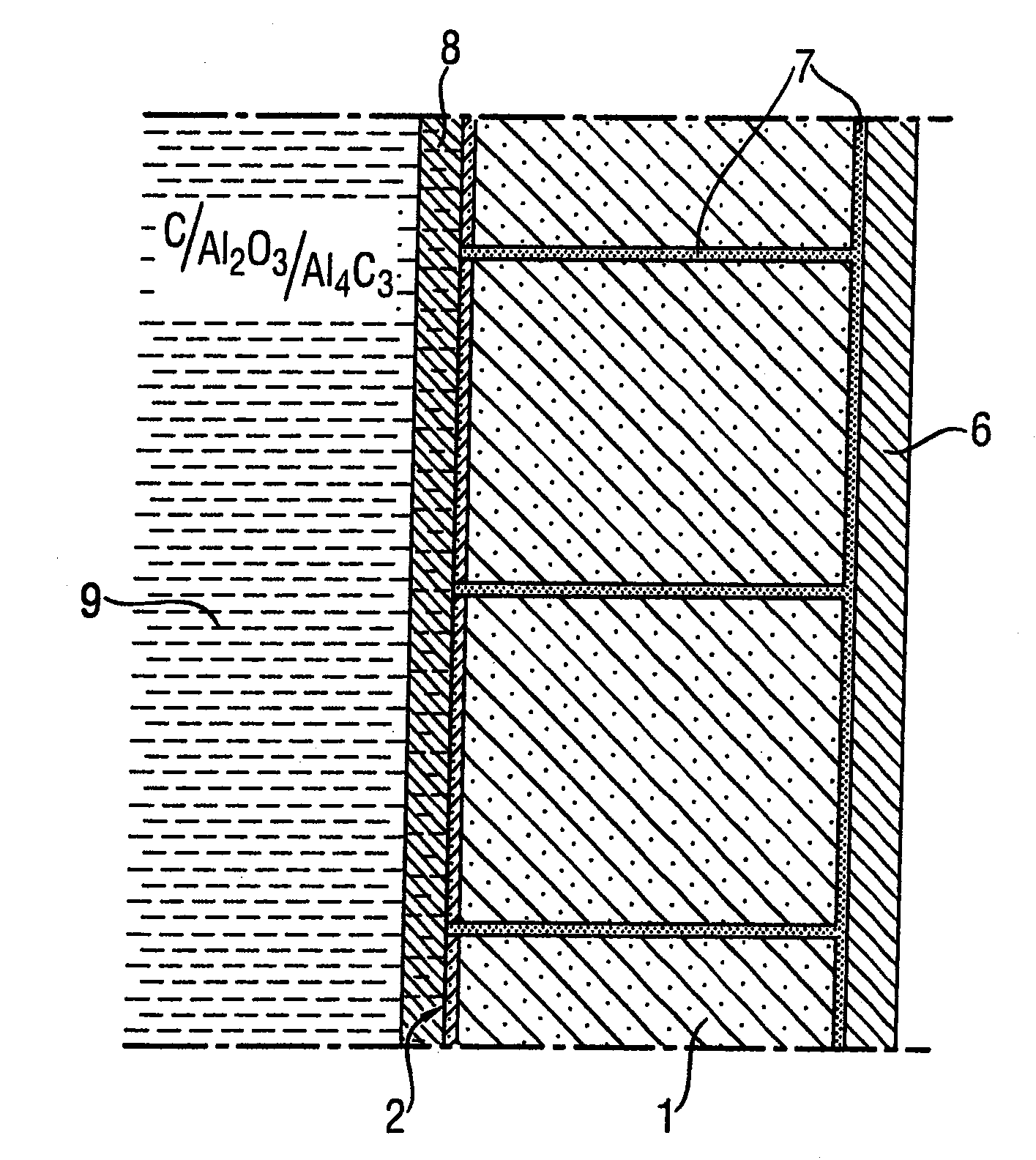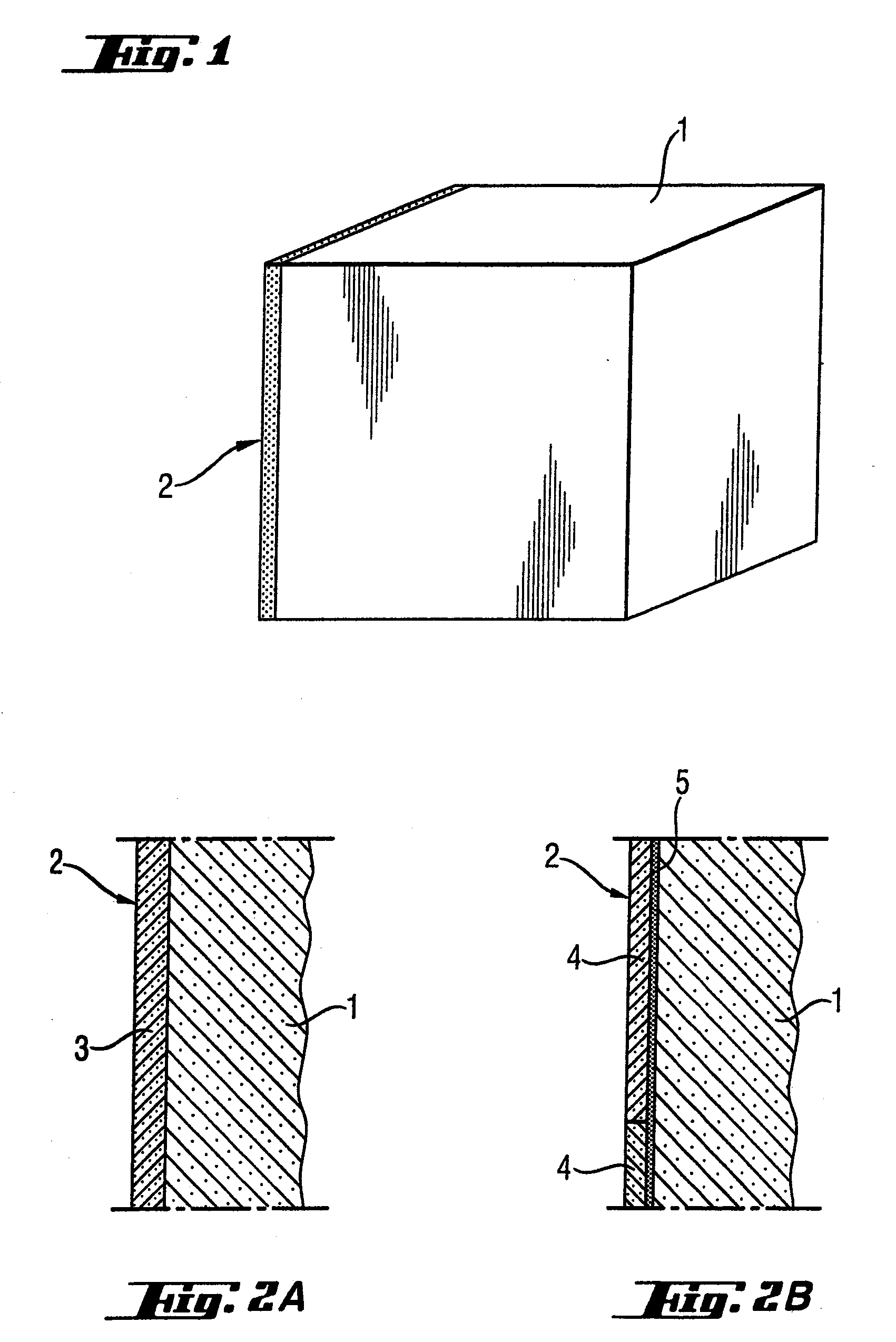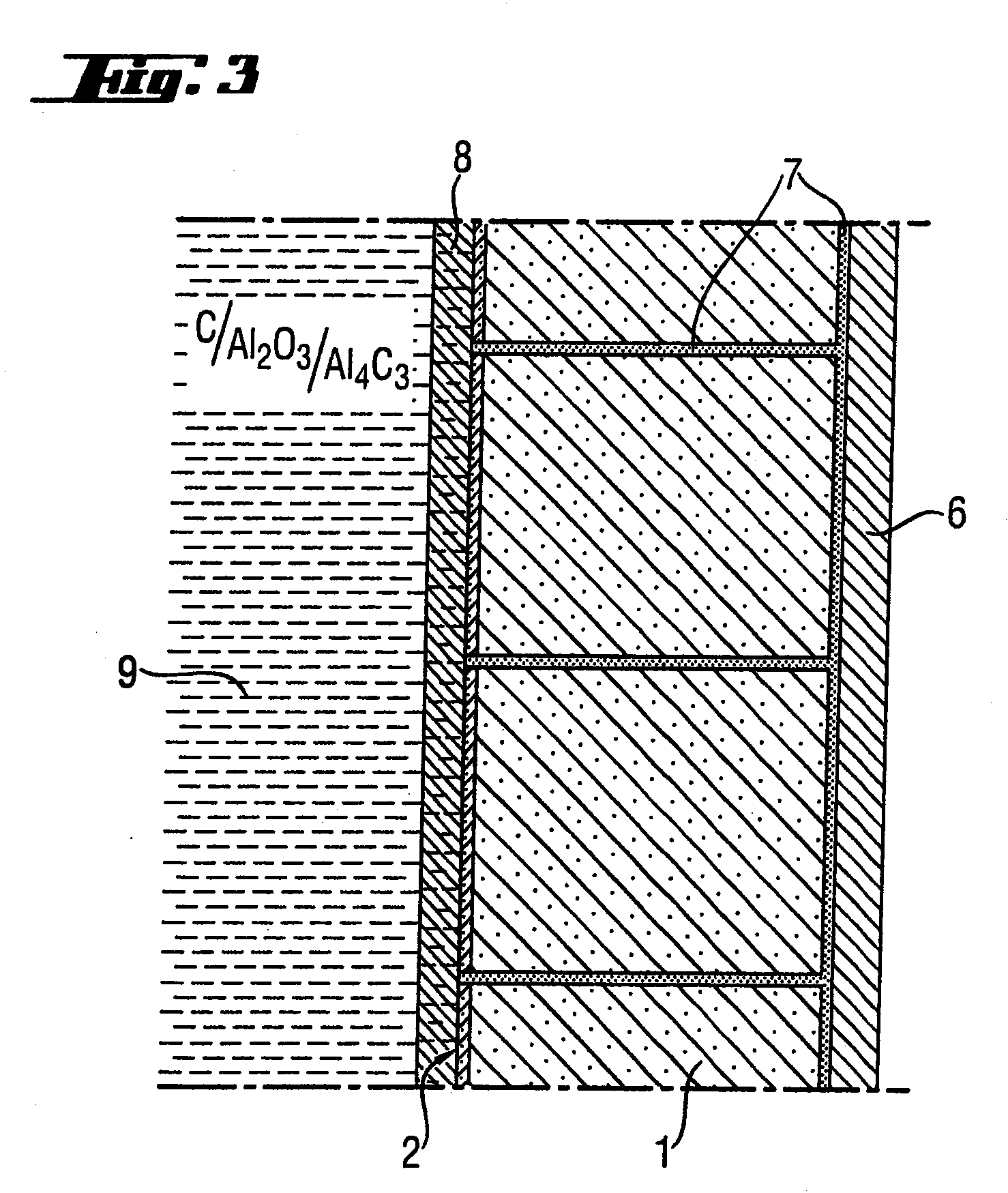Lining for Carbothermic Reduction Furnace
a technology of carbothermic reduction furnace and lining, which is applied in the field of linings and liners, can solve the problems of reducing the yield of aluminum, reducing the efficiency of the process, and reducing the efficiency of the process, and achieves the effect of effective heat dissipation system
- Summary
- Abstract
- Description
- Claims
- Application Information
AI Technical Summary
Benefits of technology
Problems solved by technology
Method used
Image
Examples
example 1
[0053]82 parts calcined low-iron coke and 18 parts of pitch having a softening point of 110° C. (Mettler) are mixed at 150° C., in an intense mixer with high energy input for 15 min. The mixture was extruded at 115° C. The extruded block was calcined for 3 to 4 weeks in a Riedhammer-type ring furnace with a final firing temperature of 900° C.
[0054]The thus obtained blocks were impregnated with impregnation pitch in autoclaves at 250° C. and pressures up to 25 bar. Afterwards they were rebaked within 1-3 weeks in rebaking furnaces at 1000° C. followed by graphitization in Castner type furnaces in firing rates up to 20 h at final temperatures surpassing 2800° C. The thus obtained graphite blocks were finally machined to the required dimensions.
example 2
[0056]A graphite block obtained according to example 1 was machined to blocks of 1 m×1 m (height×width) and 1.2 m depth. One of the 1 m×1 m surfaces was coated with a slurry of 75% finely ground corundum and 25% Sialon particles which was heat treated to final temperatures above 2500° C. The thus obtained coating had a thickness of 3 mm.
[0057]The coated graphite lining was joined by high-temperature glue with other graphite linings manufactured in the same manner to a solid lining wall inside a carbothermic reduction furnace steel shell.
PUM
| Property | Measurement | Unit |
|---|---|---|
| thermal conductivity | aaaaa | aaaaa |
| thermal conductivity | aaaaa | aaaaa |
| thermal conductivity | aaaaa | aaaaa |
Abstract
Description
Claims
Application Information
 Login to View More
Login to View More - R&D
- Intellectual Property
- Life Sciences
- Materials
- Tech Scout
- Unparalleled Data Quality
- Higher Quality Content
- 60% Fewer Hallucinations
Browse by: Latest US Patents, China's latest patents, Technical Efficacy Thesaurus, Application Domain, Technology Topic, Popular Technical Reports.
© 2025 PatSnap. All rights reserved.Legal|Privacy policy|Modern Slavery Act Transparency Statement|Sitemap|About US| Contact US: help@patsnap.com



